Essential to campaigns of all sizes is fundraising, and in this day and age, it often takes form in digital fundraising, particularly via email. But how can campaigns ensure their fundraising emails are not left on read, and donation asks are fulfilled?
We sat down with two digital fundraising consultants from firms we’ve worked with in the past to learn best practices and growing trends in digital fundraising.

New Blue Interactive believes in making good happen. Digital can be the difference between success and failure, and they make smart, strategic, personalized digital available to candidates, causes, and non-profits doing the good work in the world. NBI is woman-owned and a proud union shop combining digital marketing expertise, innovative ad creative, nimble fundraising, and agile community building to deliver high-impact results.

SBDigital specializes in targeted digital communication and are leaders in developing programs that efficiently engage audiences for electoral objectives (persuasion and mobilization) as well as brand promotion and organizing (supporter acquisition, fundraising, and visibility). Their expertise pairs new and evolving technology with proven messaging tactics, testing, and constant program optimization.
CN4 Partners: Email fundraising seems to always be evolving, what trends are you seeing now?
Team NBI:
Three of the significant trends that we are seeing right now are:
- Merchandise or other “Thank you” gifts are working well to drive donations;
- Using big name signers to boost engagement with splits for their campaign or organization is a new trend;
- Authentic messaging, as always, is a win. We ensure messages sound like the candidate and capture the reason why it is important to invest in their success.
Team SBDigital: The biggest factor is that simply being a candidate and having a program isn’t enough anymore. In the post Trump as the main villain era, you need to have a compelling concise reason for someone to give. There is also a legitimacy factor at play — you need to be honest and explain to your audience exactly WHY you need their $5 right now. Be honest, don’t over email, and be concise — those are the trends we are seeing hit inboxes with success.
Every type of race will send out fundraising emails, what is your best advice for down ballot candidates?
Team NBI: Not every race is going to have the weight of Barack Obama or Elizabeth Warren to raise tens of millions for your email program. BUT, every race has the opportunity to build connections with supporters and raise dollars. Investing in authentic communication with your supporters, building your brand, and highlighting the local issues that affect supporters will provide dividends down the line.
Team SBDigital: Down ballot candidates have a tough hill to climb. There are so many programs out there now that being a down ballot candidate doesn’t have the same name recognition a House or Senate candidate might. That being said, the implications of a state senate or state house race can be more severe than that of a House or Senate race. The best thing a down ballot race can do is drill into its audience how serious local elections really are, and that not paying enough attention to it could create serious repercussions. In an era where state governments are repealing women’s rights, going after the trans community, and going as far as banning books, state and local officials have more skin in the game and all the more reason to raise online.
What are the biggest mistakes you see campaigns make with their email programs?
Team NBI: It seems that some campaigns or digital firms haven’t learned the dangers of churn and burn emailing: ending emails over and over again without any thought process to who is on the list or filtering by engagement level just to reach the maximum number of addresses. From a deliverability perspective, it can be disastrous. From an engagement perspective, it turns off potential voters.
If your list is local, talk about local issues, if your list is national then stick to the big stuff. It Sounds generic. This is silly but not actually explaining who your candidate is. Joe Smith is emailing me…but it never says what he is running for or where or why… it’s an attempt to be personal, but if it’s too personal folks may literally not know who they are giving to.
Team SBDigital: Trying to be something they are not. If you’re not a major senate race or a frontline race, don’t try to be. Talk to your audience with the understanding that your race is different but still extremely important. The implications are different and can often be just as important, but don’t try to scream from the rooftops that your campaign could change the direction of this country… if it can’t.
That being said, if you are a major Senate race or a major House race, the biggest mistakes are two fold: 1. Don’t take your list for granted. Treat them with respect and appreciation. 2. Forgetting to grow your broadcast texting program. These programs can have huge success and not investing and thinking strategically about broadcasting early is a mistake.
What role do you see email fundraising playing in 2024?
Team NBI: Email is still a critical piece of a growing digital footprint. It is a way to really connect with your supporters, hear feedback, and develop a two-way relationship. For some campaigns, it may not be the biggest money maker compared to texting and ads, but it is still a critical component in a digital fundraising program. Your program is smaller or your donor base online skews older and might not feel comfortable giving through text or online ads, email could be the main driver of your donations.
Team SBDigital: As big of a role as ever. While there has been some reporting in recent days about decreases in online fundraising numbers, it’s important to remember the circumstances that created those high marks in 2019. We don’t have a 17 person presidential primary, Trump isn’t in office. Grassroot email fundraising donors don’t live in an echo chamber, they are real people who see what’s happening in the world, and react accordingly.
We’ve been noticing more and more fundraising texts. How successful are these text campaigns and any words of advice?
Team NBI: Very successful! Our company-wide average return on ad spend is more than 400% but we’ve had clients see returns upwards of 7000%. Every program should at least test it. It is a low cost way to potentially see huge returns. There are two ways to text, broadcast and peer to peer, you should always start with peer to peer because it can scale up quickly.
Team SBDigital: Texting is a wonderful tool, but be wary of sending too many. Texts are great because they are more likely to end up in front of a donor’s eyes, but it is also much easier to opt-out of a text. You want to make sure you are not burning your list with too many text asks, and then miss out on the opportunity to mobilize those voters to the polls, or raise more money during a more impactful moment.
Can a campaign send too many emails? Where is the line?
Team NBI: Yes! It should be based on the size of your list and the type of race you have. If you are a safe incumbent with a small list there is no reason to bombard people with emails. Eventually, it will increase your unsubscribes/spam and have diminishing returns. But, don’t be too cautious either, email inbox volume is higher than ever and you have to compete. Use targeted universes, be strategic and test!
Team SBDigital: Absolutely! The line is always moving but you never want your audience to feel disrespected and overburdened by the number of emails you are sending.
Can you explain segmenting to us like we are in kindergarten? It’s important, but why?
Team NBI: When it comes to online fundraising there are a lot of different and critical reasons segmenting is vital. You may hear how important it is to segment your list into many smaller segments. But we like to think of it as three big buckets with a lot of options to mix and match inside.
- High Dollar Donors: the candidate’s friends and family, co-workers of the candidate and really anyone who has the candidate or their inner circle’s ear. These folks are great to send select communications to, that ensures we protect these names to ensure they can keep supporting us.
- Potential Voters/Volunteers: these are folks in the district who have a previous volunteer action and or are known local activists.
- Prospects and Grassroots Donors: individuals will get a mix of the content the other two buckets get – but they will also get the most email and will be part of our texting universes. The folks in here may have a potential to volunteer or vote, but their biggest asset is their potential to give.
You will mix these buckets up to send messages based on engagement level or known recent engagements to ensure your outbound communications are sent to folks.
Team SBDigital: Segmentation plays two roles in online fundraising. There are your hyper-targeted segments for events, mobilization, specific niche issue areas, or high dollar requests. These usually small segments are important to label and treat with care. Do not over burden them with the general spree of evergreen fundraising emails. The other piece of segmentation that is used daily is the segments of engagement. The pieces of your list that are more and more active or less and less active. Your list should not just be two piles: active and inactive, but an entire ladder of tiers with different criteria at every step.
How is AI going to impact email writing for campaigns and organizations? Is this a good development?
Team NBI: We’ve seen some campaigns rely on AI generated email and despite the advancements in the technology, we can still tell that these were not written by humans — and we believe donors can too. In our tests, copy with the human touch outperforms AI generated copy. We think it’s a great tool in the toolbox but we aren’t ready to cede our expertise to algorithms.
Team SBDigital: AI has the potential to do a lot of good and a lot of harm when it comes to email writing for campaigns and orgs. AI can help a lot when it comes to analyzing audiences and creating unique segments, but I think folks are thinking it can be used for content generation. AI can create very generic content that is evergreen for campaigns and orgs, but audiences aren’t going to be motivated to take action with this content. AI writing lacks authenticity and also lacks a campaign’s voice. Having a unique campaign voice is crucial to a successful email program, and AI is unable to recreate that.
Online most solicitations are done via text and email. Do you see a future in monetizing other platforms for campaigns?
Team NBI: Email and texting have become a reliable source of fundraising for campaigns in the past few cycles, just like texting was a new platform, we are always looking for the next thing that will break through and be effective. In the midterms, we deployed some innovative new programs including fundraising on Twitter DMs, with return on ad spend topping 785%.
Team SBDigital: Talk to camera video requests from candidates backed up with a paid budget and a really well crafted audience will always be a strong tertiary option for campaigns, especially in peak moments. That being said, within texting there are subscriber based formats that take longer to build up and have more up front costs, but have the potential to outperform and outlast the peer-to-peer model.
Rapid fire:
How many emails should a campaign send a week?
Team NBI:
Small races 1-3
Medium races 2-4
Huge races and or big organizations 5-8
Team SBDigital: Two to three
What is the best day and time to send out an email?
Team NBI: It depends on your list.
Team SBDigital: Completely campaign specific.
Favorite subject line?
Team NBI: Need NAME to read this
Team SBDigital: The devil works hard but the Georgia GOP works harder
Emojis in emails?
Team NBI: Love to test them! And clients love them! But spammers love them too.
Team SBDigital: 👍
Pick one surrogate to send an email.
Team NBI: Nancy Pelosi or Barack Obama. Sometimes old school works.
Team SBDigital: Martin Sheen.
Thank you, Team NBI and SBDigital. We had fun learning more about a tool that is very familiar but also taken for granted.
To learn how to get your campaign started so that you can utilize your lists, please don’t hesitate to reach out at jess@cn4partners.com.









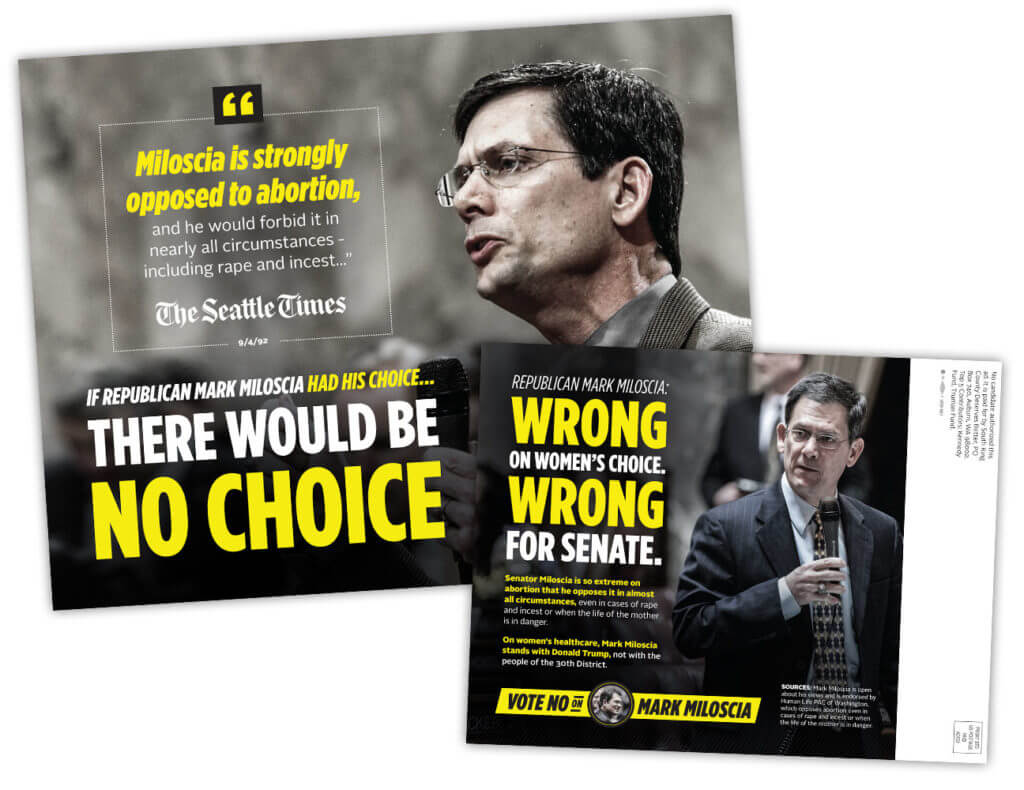
















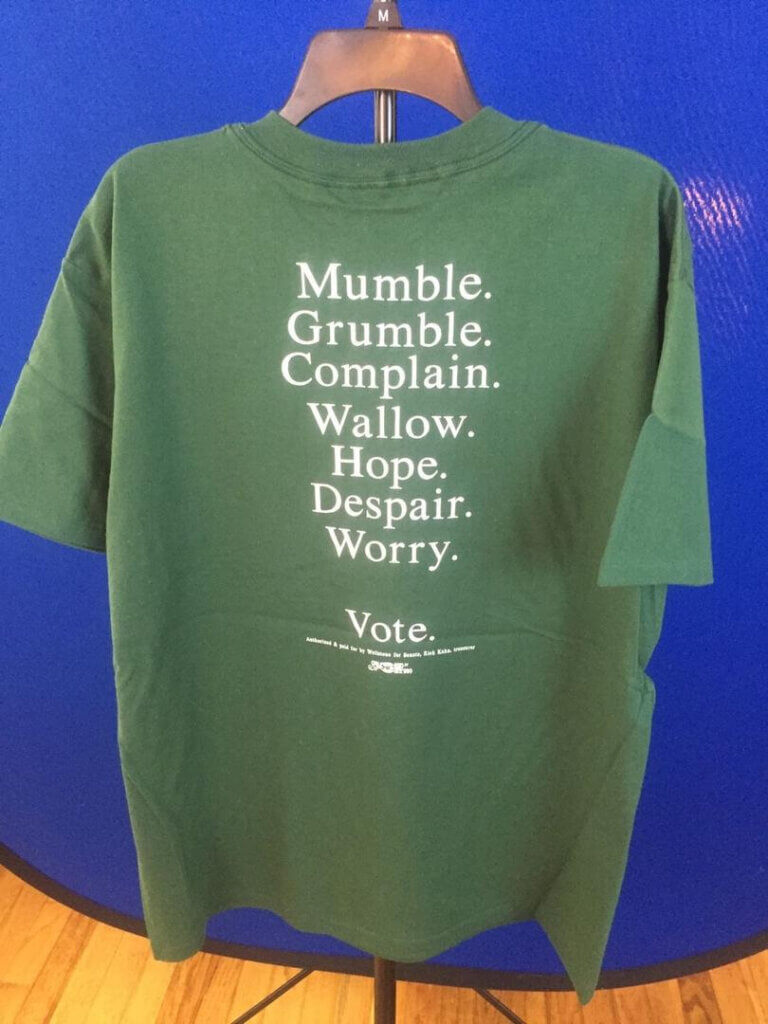








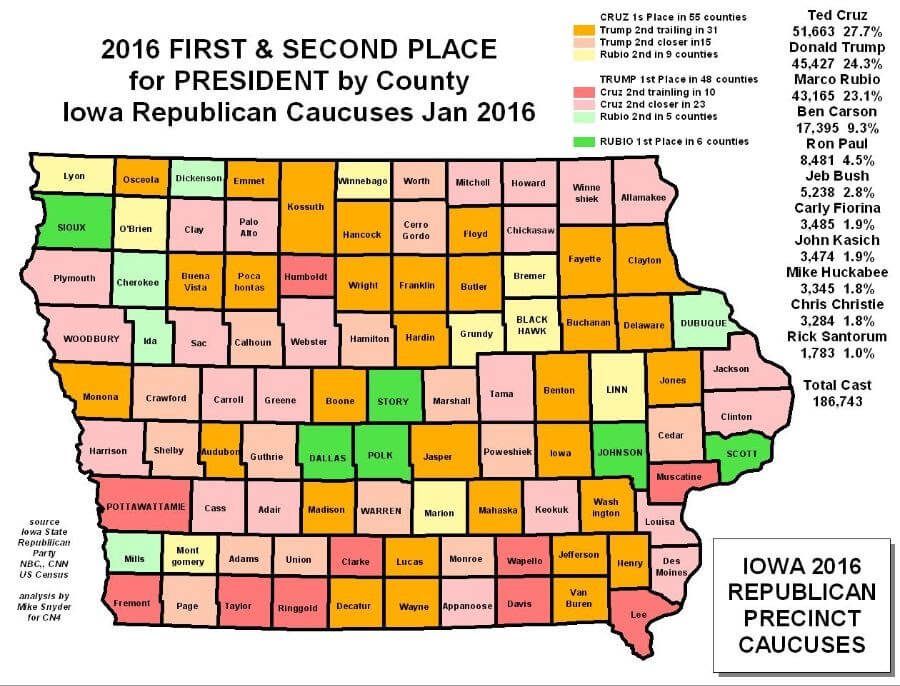



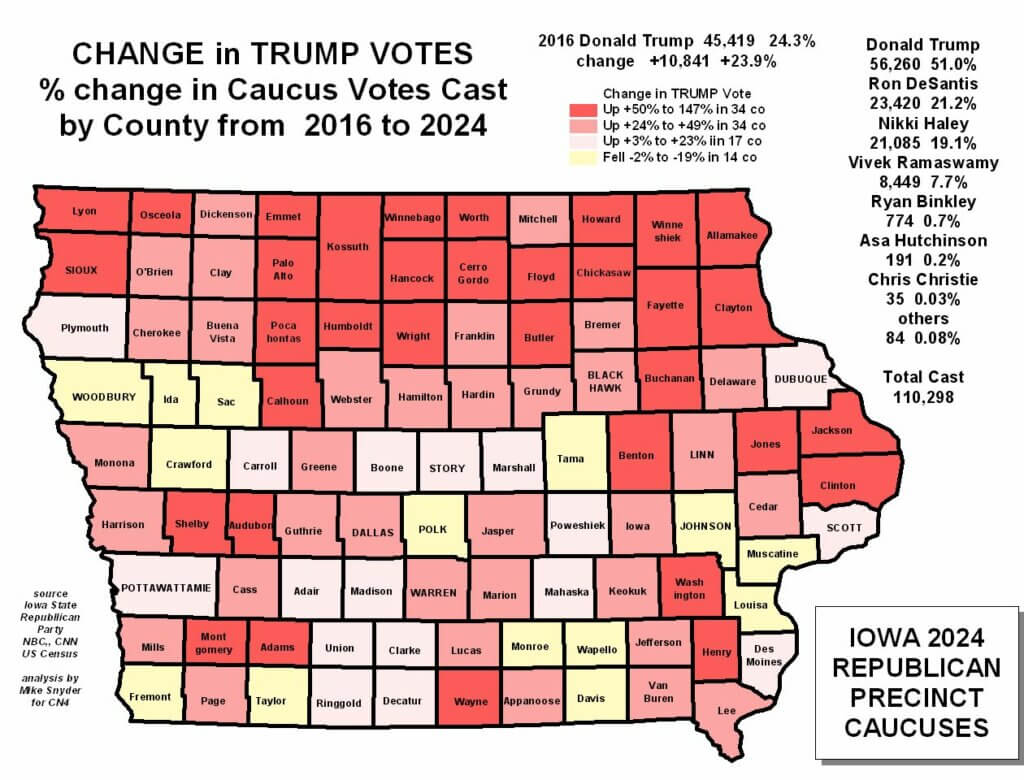
 Of the 2024 GOP field, Nikki Haley had the least even geographic distribution of Iowa caucus support, which was surely a factor in her being pipped for 2nd place by DeSantis. Haley broke 30% in only 2 big, and big university, counties (Johnson, Story); and she performed above her statewide mark in only 9 other counties including 5 bigger (Black Hawk, Dallas, Linn, Polk, Scott).
Of the 2024 GOP field, Nikki Haley had the least even geographic distribution of Iowa caucus support, which was surely a factor in her being pipped for 2nd place by DeSantis. Haley broke 30% in only 2 big, and big university, counties (Johnson, Story); and she performed above her statewide mark in only 9 other counties including 5 bigger (Black Hawk, Dallas, Linn, Polk, Scott). Ron DeSantis had the most even geographic distribution of Iowa caucus support of any candidate in the 2024 Republican race, which in turn was a major, indeed decisive factor, in earning him second place statewide, albeit a distant second to the winner. The Florida governor broke 30% in only one county (Sioux). He also performed at or above his statewide average of 21% in a group clustered in central Iowa but extending across the state. DeSantis under-performed in the rest of the state, including 3 of the biggest counties and was held to below 10% in three counties.
Ron DeSantis had the most even geographic distribution of Iowa caucus support of any candidate in the 2024 Republican race, which in turn was a major, indeed decisive factor, in earning him second place statewide, albeit a distant second to the winner. The Florida governor broke 30% in only one county (Sioux). He also performed at or above his statewide average of 21% in a group clustered in central Iowa but extending across the state. DeSantis under-performed in the rest of the state, including 3 of the biggest counties and was held to below 10% in three counties.































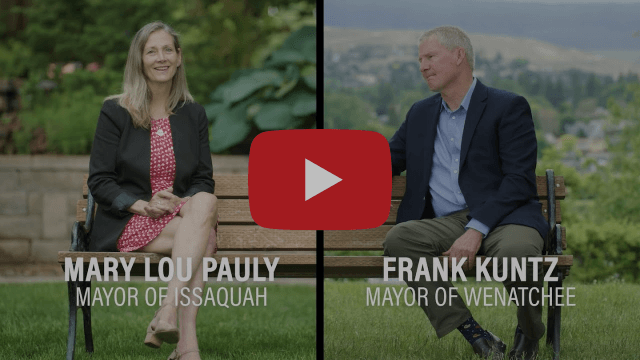







 We are honored to partner with MFPE on these important communications to their members and the public. As political media evolves, we are focusing on implementing new strategies and tactics. If your political project needs compelling media with innovative strategies – give me a call/email and let’s figure out how CN4 can partner with you and help you win.
We are honored to partner with MFPE on these important communications to their members and the public. As political media evolves, we are focusing on implementing new strategies and tactics. If your political project needs compelling media with innovative strategies – give me a call/email and let’s figure out how CN4 can partner with you and help you win.